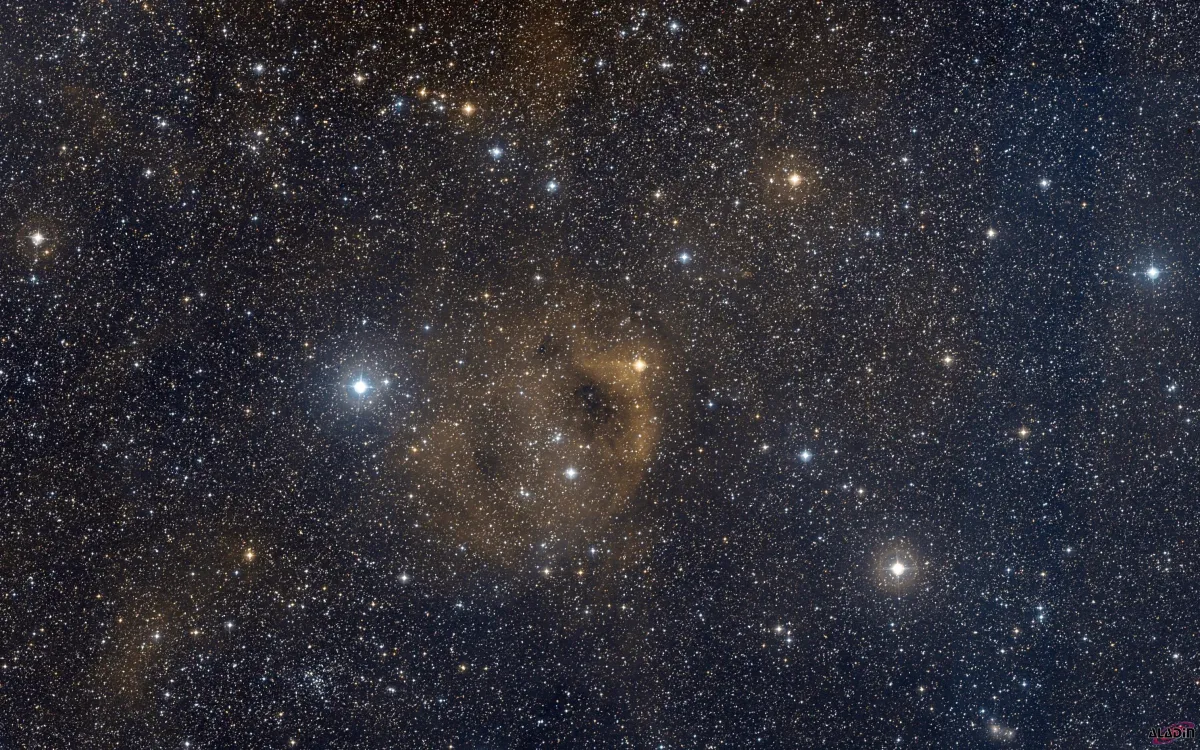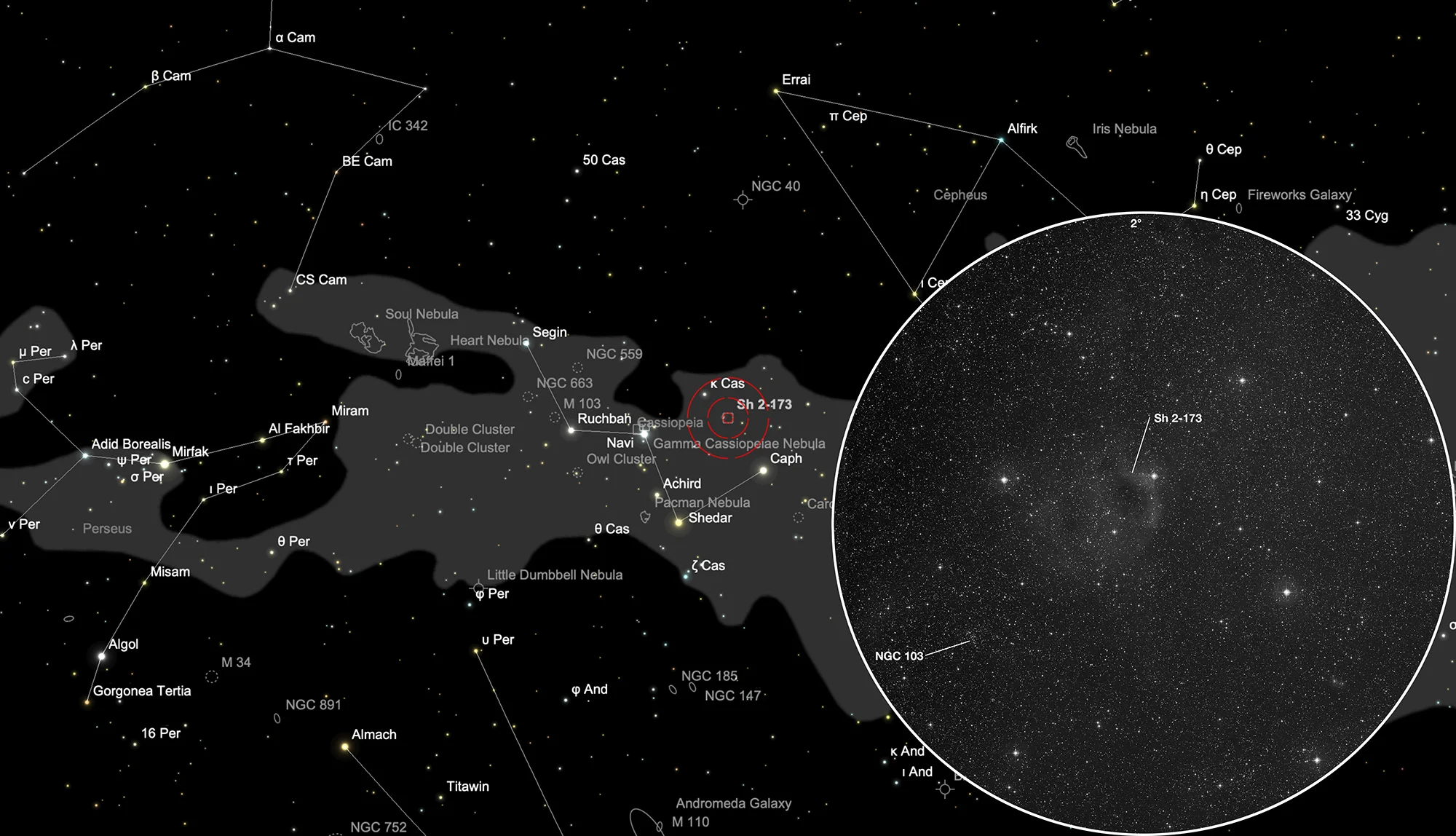Phantom of the Opera Nebula (Simeis 21)

History
This emission nebula was discovered in the early 1950s by the Russian astronomers Grigory Abramovich Shajn and Vera Fedorovna Gaze at the Simeis Observatory on the Crimean Peninsula and referred to as Simeiz 21 (also Simeis 21, Sim 21, S 21). [402] In 1953 Stewart Sharpless published his first survey of H-II nebulae discovered on the 48 inch Schmidt telescope photo plates of the «Palomar Observatory Sky Survey» and listed the nebula Sh 1-188, referring to S 21. [309] In his final survey published in 1959 he listed it as Sh 2-173. [310]
In Beverly Lynds «Catalogue of Bright Nebulae», which was published in 1965, this nebula is listed as LBN 119.57-00.92 or also LBN 593. [270]
Physical Properties
Sh 2-173 lies along the dense edge of a large (∼5°) H I shell known as GSH 117.8+1.5−35. Evidence suggests that Sh 2-173 may be part of a hierarchical, three-generation star formation system. In this scenario, the expansive H I shell — likely formed through the activity of the Cas OB5 association — triggered the creation of Sh 2-173, which is now itself inducing the formation of new stars within its surrounding molecular cloud. Sh 2-173 is considered a young H II region, approximately 0.6–1.0 Myr old, while the larger shell has an estimated dynamical age of about 5 ± 1 Myr. The distance to Sh 2-173 is estimated to be between 1.8 and 3.1 kpc. [746]
Finder Chart
The H-II region Simeiz 21 (Sh 2-173) is located in the constellation Cassiopeia and is circumpolar for Central Europe. On 29 September it is in opposition to the Sun and culminates at local midnight.
Visual Observation
300 mm Aperture: Nothing at all can be seen of the Simeiz 21 nebula (Sh 2-173) with an OIII filter, and certainly not without one. — 300 mm f/4 Popp-Newton, Hasliberg, SQM 20.9, 18. 10. 2025, Bernd Nies
